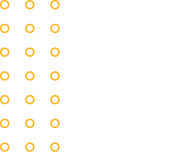The Challenge Project
Khora
for
Region Hovedstaden
Kategori :
Type :
andet


Challenge is a project to develop a novel therapy to aid people who suffer from auditory hallucinations, specifically, hearing malevolent voices. The Danish Health Authority has estimated that schizophrenia is among the most expensive disorders in terms of lost workforce and costs of treatment. On a personal level it greatly inhibits daily functioning and quality of life.
Despite the current medical and psychological interventions, no less than 30% of patients will still hear malevolent voices making an everyday meaningful life a constant struggle. These patients are so called “treatment resistant” and are the main target group of the Challenge project and treatment. An exposure to auditory hallucinations is impossible to organize and control in real life. To this effect, Khora is developing the core software to support this novel treatment. With this project, we expect patients to be able to develop new skills and strategies to cope with their malevolent voices. This type of treatment may also improve the cost effectiveness and efficacy of the current treatment of auditory hallucinations.
CHALLENGE is an innovative Virtual Reality (VR) based software system combining technology within the field of mental health, which will facilitate psychological treatment for patients suffering with auditory hallucinations.The use of Virtual Reality allows exposure to challenging situations in an immersive, but also protected, flexible, and controlled environment.
The unique VR simulation training program combines 3 unique components:
A face creation module where the therapist can create a visual representation of the patient’s malevolent voice, where gender, age, and facial characteristics are all customizable.
A voice modulation module where a recording of the therapist’ voice can be modulated – by changing age, gender, pitch, and other traits – to resemble the patient’s persecutory voice.
The Real Time VR simulation where the patient can engage in a dialogue with the visual representation of the malevolent voice in VR and practice to confront it whilst the therapist is acting as the voice via the real time voice modulation feature
The unique aspect of the CHALLENGE software is that we have created the possibility for patients to create an avatar and have a dialogue with a digital representation of their presumed persecutor, which is voiced by their therapist. The patient learns to become more empowered, to stand up and manage the malevolent voice, which will help improve their mental health and wellbeing significantly. If a person with schizophrenia gets the right treatment and the support they need, they can manage their symptoms and live a healthy life.
The Challenge Project is a trial in collaboration with Region Hovedstaden funded by the Innovation Fund Denmark. We are currently running a Randomised Control Clinical Trial (RCT), where we aim to recruit a total of 266 patients with schizophrenia who experience auditory hallucinations. We are unable to provide concrete data due to the RCT still undergoing active recruitment, however we can a patient’s experience undergoing the CHALLENGE therapy. (Personal details are anonymised to retain anonymity).
Case study 1: Peter’s patient experience
Background: Peter, is a male in his 50’s, who was diagnosed with schizophrenia at the age of 21 and has suffered from auditory hallucinations for more than 25 years. Over the years he had numerous hospitalisations and been subjected to force and restraint. He has been in treatment with medication for several years but continues to hear voices. The voice he hears is representative of his mothers voice.
Avatar treatment sessions:
Session 1: Voices present 80-100 percent of the time. The avatar is being created together with the therapist.
Session 2: The patient sees the avatar in 2D and ‘3D very far’. The patient experienced pronounced anxiety and had the experience of hearing his mother’s voice. He describes the voice as clamping him, and persists for several weeks, both day and night, which causes difficulties with sleeping.
Session 3: The patient considers terminating VR-treatment. However, he comes to his own decision that he wishes to continue. He chooses not to do the VR in session 3.
Session 4 and 5: The patient feels comfortable to try the VR again and sees the avatar in 2D and ‘3D far away’. The avatar is mute. The patient still experiences anxiety and the sensation of being clamped.
Session 6: The avatar says: “I’m your voice”. The patient responds: “Yes, you are”. Subsequently, the patient is shocked.
Session 7: The patient is in VR and answers the avatar back for the first time. The clamp starts to loosen.
Session 8 and 9: The patient answers the avatar back with a firm voice but develops anxiety.
Session 10, 11. Therapy consists of focus being on self-worth using positive statements from relatives.
Session 12. The patient bids farewell to the voices.